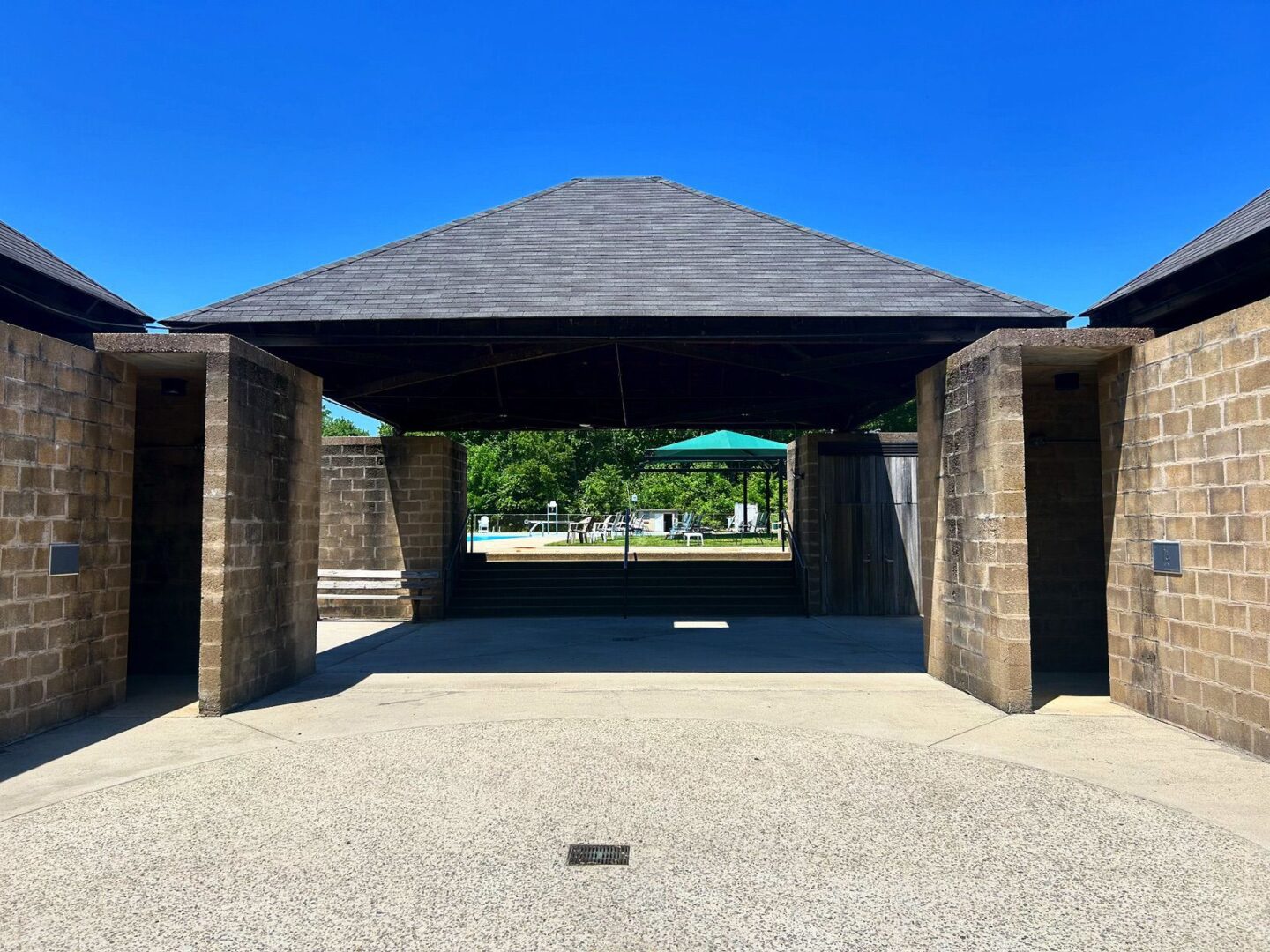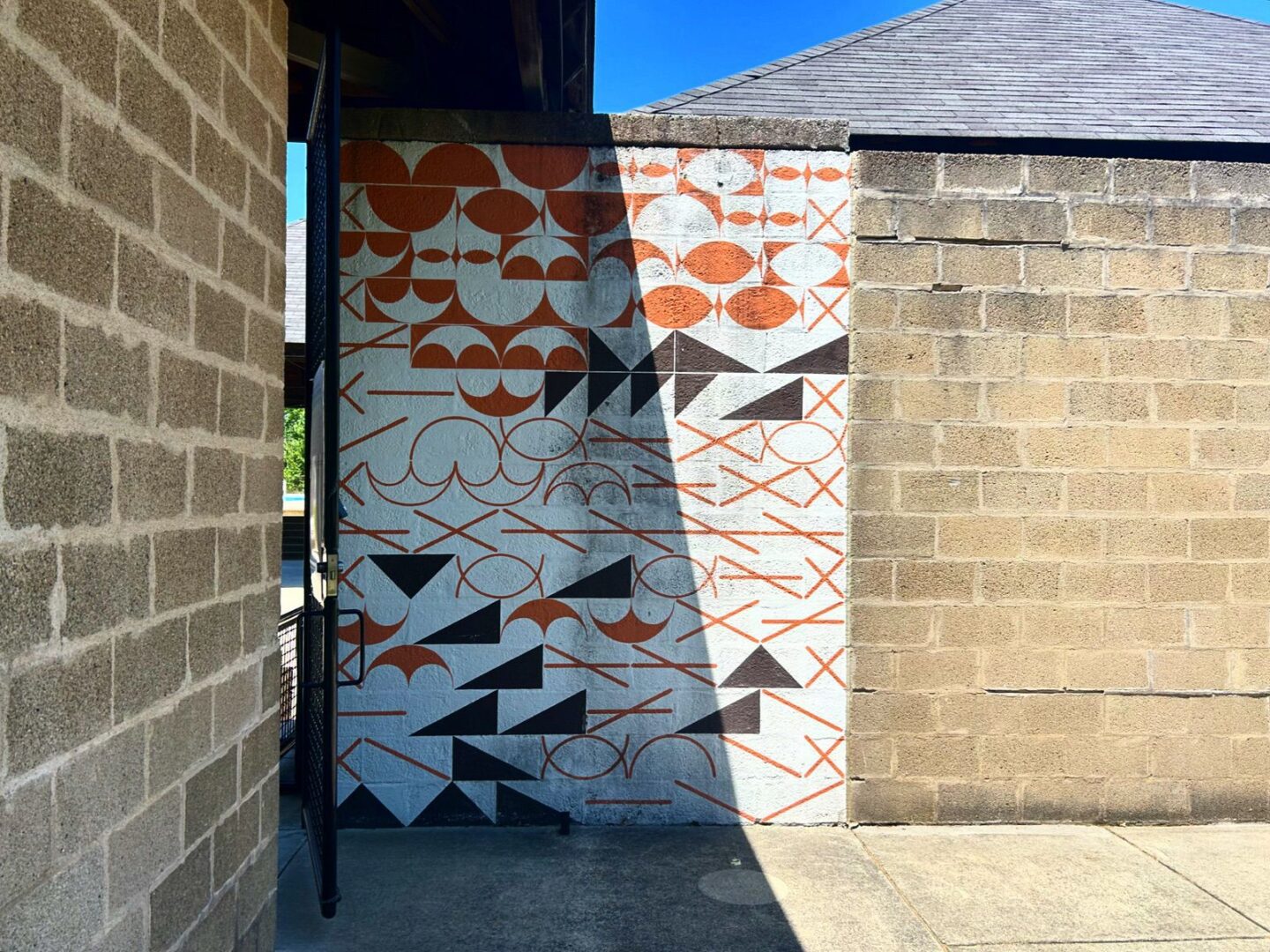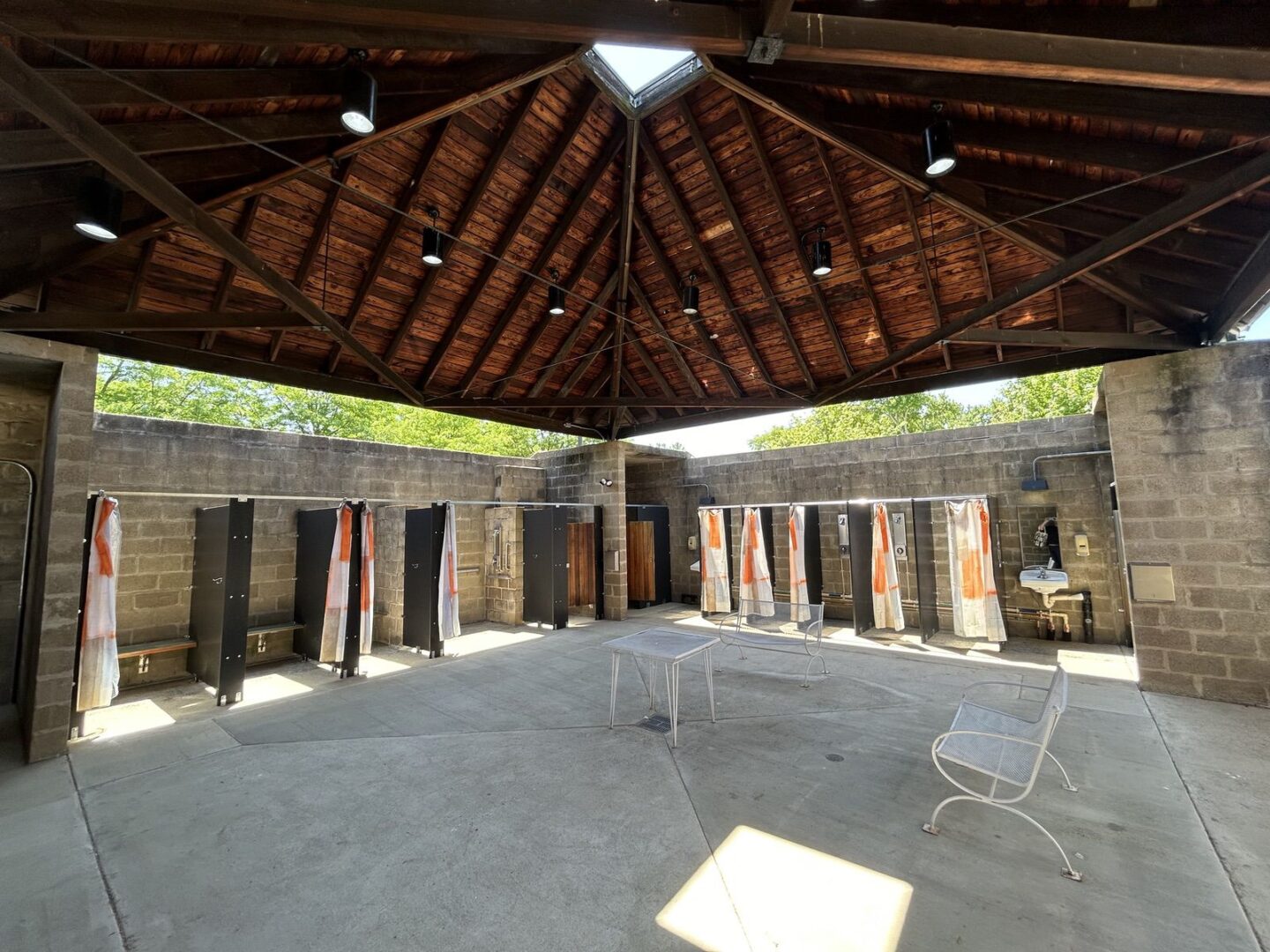
The Trenton Bath House is considered the project that marked architect Louis Kahn’s evolution away from midcentury trends and established his own signature vision. This otherwise inconspicuous township has become a holy pilgrimage site for Kahn’s disciples. It is a surprisingly pleasant trek outside the state capital into the bucolic suburbs.
Originally built in the 1950s for the Jewish Community Center, the bath house still fulfills the same purpose as the changing rooms for a public swimming pool. Now it is run by the Township of Ewing. A day pass costs $12, but a resident must accompany you.

Before I proceed, it’s important to set expectations. Kahn’s designs are often associated with monumental civic and cultural centers like the National Assembly Building in Bangladesh. The bath house itself is unassuming at first glance. The Architectural Record called it “banal.” From the street, the simple shapes and building materials of exposed cinder blocks peek out from between the honey locust trees and I briefly thought I might be at the wrong place. In fact, it wasn’t until I saw Ted Forst, Ewing’s director of community affairs, who acted as my tour guide, that I knew I was at the right place.

From within, the structure’s subtle charm reveals itself. At the entrance, there is a mural inspired by the tile floors found at the Baths of Caracalla archaeological site in Rome. This artwork is an important thesis statement that helps orient visitors to architect Kahn’s vision, which was heavily inspired by Greek and Roman antiquity. The building consists of four separate pavilions shaped in the form of a cross. The simplicity, symmetry, and sparseness of the design resemble an ancient ruin.

The bath house is still used the way Kahn intended when it was completed in 1957. The pavilion near the entry is used as a welcome desk for guests. The two others are bathrooms and showers. The last of the four is a dramatic entryway that frames the swimming pool outside.
Many essays are dedicated to this seminal project, but I often find architectural writing maddeningly esoteric. More simply put, there is something light and peaceful about these rooms. The wooden roofs appear to float above the exposed cement walls and allow plenty of natural light and ventilation into these rooms. There are no doors – privacy into the changing rooms is achieved by directing foot traffic around a sharp turn created by a privacy wall – giving a sense of an endless flow from room to room. There are also no windows. The thick walls block out the world beyond and make this place feel far away. Nature surrounds the entire place, including trees filled with chattering birds.

Forst, who opened the pool house up for Jersey Digs only a day before it opened to the public, remembered, long before he worked for the local government, when he would take his children here late in the day to enjoy the evening out. “The sun sets over there,” said Forst, pointing to a clearing in the trees. “We’d get a pizza for dinner and stay until they kicked us out.”
Some of the features in Kahn’s design have proven a bit too idealistic for the modern world. One thing visitors will notice about the cement walls is the deteriorating masonry. The cause is in large part due to Kahn’s insistence not to use gutters along the eaves. The rainwater that cascades dramatically down the cement is scraping the walls over time. Forst came before the state’s Historic Sites Council in April with a plan to repoint the cinder blocks, touch up the mural, renovate the original wading pools, and finally update the roofs with gutters. While some may insist on keeping Kahn’s original vision pure, Forst believes the changes have been made with the hope of extending the life of the bath house and enabling more people to enjoy it.
“We plan on having it for years to come,” Forst said.